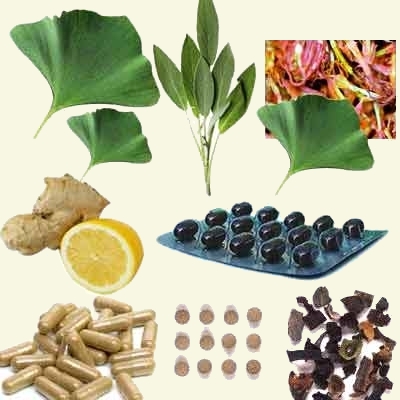Shop News
-
25/11/2025Ganoderma Benefits
-
07/02/2025Colds & Flu - treatment and prevention
-
24/01/2025Ginseng - Nature's anti-inflammatory
-
23/01/2025Curcumin Benefits
-
02/05/2024Allergies Tradicional Chinese Medicine
-
12/03/2024Food Combining and Chinese Medicine
-
23/08/2023Phytoestrogens
-
05/06/2023Ginseng Benefits
-
02/06/2023Aumento de precios de la marca Blue Poppy
-
20/07/2022Infertility and Chinese Medicine
-
10/05/2022Allergic Rhinitis
-
24/03/2022TCM Obesity and Its Causes
-
23/03/2022Cancer Prevention and Diet
-
26/01/2022Medicinal Mushrooms
-
18/12/2021Christmas Remedies
-
09/07/2021CANDIDIASIS
-
03/03/2021Chinese Herbal Medicine formula studied to improve cancer therapy
-
12/01/2021The benefits of Xiao Yao San
-
15/09/2020Coronavirus Protocol (summary)
-
01/06/2020TCM Principles for Weight Loss
-
12/02/2020Take Good Care of Your Qi
-
01/01/2020Cordyceps Sinensis Benefits
-
01/12/2019Prevention & Treatment of Colds & Flu
-
27/04/2019ANXIETY - causes and treatments
-
26/03/2019Prostatitis and Chinese Herbs
-
01/03/2019What is an Adaptogenic Herb?
-
05/02/2019New Jade Herbal Formulas
-
09/12/2018The Shen of the Heart
-
23/08/2018Hyperthyroidism and Hypothyroidism
-
05/07/2018FOCUS ON A REMEDY: WARM THE MENSES
-
04/04/2018Treating Insomnia With Chinese Herbal Medicine
-
25/03/2018Cordyceps Sinensis research
-
01/03/2018Chinese Herbal Medicine for Panic Attacks
-
17/01/2018Clinical application of the Clear Metal remedy for advanced stage of influenza
-
02/01/2018New Pediatric Formulas by "Blue Poppy"
-
07/11/2017BI SYNDROME
-
01/09/2017Chemotherapy and Anti-Oxidants
-
05/03/2017Lumbar Disc Herniation
-
31/01/2017Treatment Principles in Exterior Invasions
-
21/10/2016Healthy Aging and Oriental Medicine: Qi is the secret
-
23/09/2016Horny Goat's Weed Benefits
-
23/07/2016FOCUS ON A REMEDY: PROSPEROUS EARTH
-
25/06/2016Ginkgo Biloba Benefits
-
23/03/2016Blood Stasis
-
23/02/2016FOCUS ON A REMEDY: PROSPEROUS EARTH
-
23/01/2016CHRONIC FATIGUE SYNDROME
-
28/12/2015TONICS
-
24/10/2015A CASE HISTORY OF CHRONIC BRONCHITIS
-
23/09/2015Ganoderma Lucidum reduces obesity in mice
-
01/07/2015The Five Elements and Diet in Chinese Medicine
-
23/05/2015Daoist Sexual Practices
-
21/02/2015DEPRESSION
-
22/01/2015GLAUCOMA
-
20/12/2014ENDOMETRIOSIS
-
28/11/2014POLYCYSTIC OVARY SYNDROME
-
21/08/2014Ear infections and antibiotics
-
24/06/2014FOCUS ON A REMEDY: CHEMO-SUPPORT
-
21/03/2014Stomach-Yin Deficiency and Jade Spring
-
21/02/2014JOY, AN EMOTIONAL CAUSE OF DISEASE?
-
17/01/2014SEXUAL LIFE IN CHINESE MEDICINE
-
19/12/2013ON STAGNATION OF LUNG- AND HEART-QI
-
14/11/2013THREE TREASURES REMEDIES FOR PAIN
-
23/10/2013HEADACHE CASE HISTORY
-
22/10/2013.
-
12/07/2013Giovanni Maciocia Clinical Tip: Arouse Power
-
28/05/2013Blue Poppy - New Formulas
-
19/04/2013Case history - Chronic constipation
-
14/03/2013Three Treasures Webinar
-
31/01/2013Recurrent Bronchitis: a case history
-
31/12/2012FOCUS ON A REMEDY: SOOTHE THE SHEN
-
18/06/2012Herbs for the treatment of Anorexia
-
09/05/2012Three Treasures & Women's Treasures now available
-
09/04/2012REMEDY OF THE MONTH: CLEAR YANG
-
02/07/2011New Pediatric Formulas
-
28/04/2011Lingzhi slows progress of Alzheimer’s
-
18/10/2010European Legislation for natural products
-
19/09/2010700-year-old Chinese medicine can treat depression...
-
24/04/2010PDF Catalog
-
01/09/2009Swine Flue

An ancient traditional Chinese medicine “wandering free - Jia Wei Xiao Yao” formula which is at least 700 years old has been proven scientifically to be effective in treating depression. The results of the study will be published in August.
Kami-shoyo-san (加味逍遙散, Jia Wei Xiao Yao San), a traditional Chinese medicine, has been used to treat patients with neuropsychiatric disorders. The Chinese term “xiao yao” means wandering free, which implies its anti-depressive effects.
What is Kamo-shoyo-san? Kami-shoyo-san consists of 10 medicinal herbs, including chai hu (柴胡, Radix Bulpleuri), bai shao (白芍, Radix Paeoniae), dang gui (當歸, Radix Angelicae Sinensis), and gan cao (甘草, Radix Glycyrrhizae), bo he (薄荷, Mentha haplocalyx), fu ling (茯苓, Poria cocos), mou dan pi (牡丹皮, Paeonia suffruticosa), 槴子 (Gardenia jasminoides), and ginger (Zingiber officinale). In Taiwan, its concentrated form was the most popular herbal drugfor depression and anxiety and alike disorders. It is also a popular herbal drug to treat insomnia in Japan.
The formula first appeared in Song Dynasty (between 960 and 1279 AD.) in a TCM classic He Ji Ju (太平惠民和劑局). It was said to relieve muscular pain, dizziness, uneasiness, hot flashes, extreme sweating, insomnia, decreasing appetite and abnormal menstrual symptoms. In modern times, it has been used to treat many neuropsychiatric disorders, as well as liver diseases.
Literature shows that the formula has been shown to relieve panic attacks, anticipatory anxiety and agoraphobia. It has been used to treat irregularity of menstruation and anxiety involved with a menstrual cycle.
When used as an adjunct to carbamazepine (carbamazepine is an anticonvulsant and mood stabilizing drug, used primarily in the treatment of epilepsy and bipolar disorder. It is also used to treat schizophrenia and trigeminal neuralgia) in patients with bipolar disorders, the Jia Wei Xiao Yao combo treatment resulted in significantly greater clinical response rate indepressed patients. Kamo-shoy-san has proved to provide additive beneficial effects in bipolar patients, particularly for those in the depressive phase.
A group of scientists at the Department of Neuropsychiatry, School of Medicine, Paik Inje Memorial Clinical Research Institute, Inje University, Korea conducted the study and its results will be published later this year in the medical journal Psychiatry and Clinical Neurosciences.
In the present study, the anti-depressant-like effects and mechanism of action were investigated. Male Sprague-Dawley rats were given 10-fold or 20-fold the typical human daily dosage. Immobility time was measured by the forced swimming test, and hippocampal neurogenesis was quantified under immobilization stress.
The results showed that rats given the 20-fold dosage had a significantly lower immobility time and improved neurogenesis in the hippocampus. However, no significant improvement was noticed on those that took the 10-fold dosage.
The researchers thus suggest that the Jia Wei Xiao Yao possesses an antidepressant-like effect at a behavioural and molecular level.
credits: chinese medicine news
